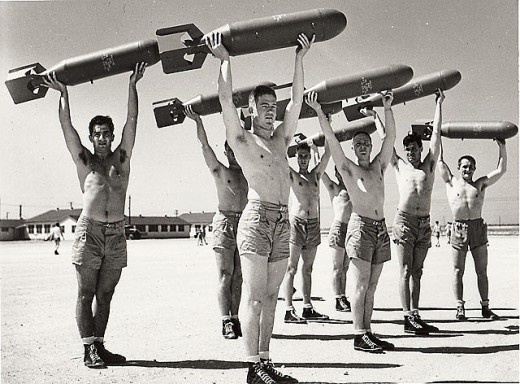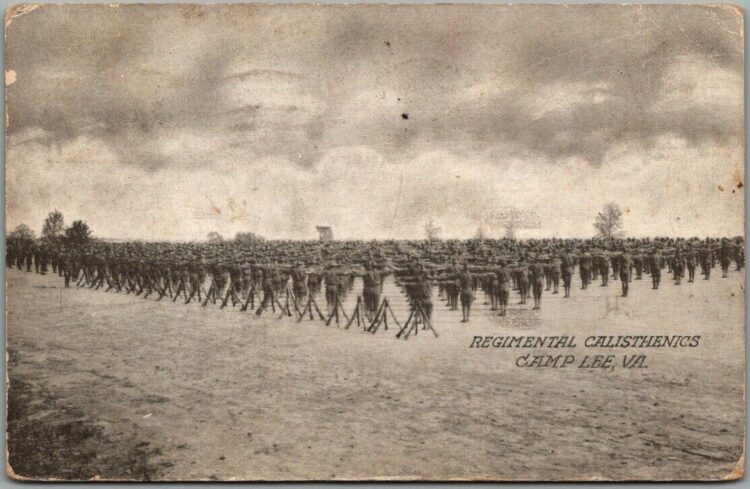The history of military calisthenics traces back centuries, with its roots deeply embedded in military training and physical fitness practices. Calisthenics, a form of exercise that uses bodyweight movements, has been employed by various militaries around the world as an effective means to build strength, endurance, and overall physical fitness among soldiers.
Ancient militaries, such as those of the Greeks and Romans, incorporated calisthenics-like exercises into their training regimes. These exercises were designed to prepare soldiers for the rigors of battle and enhance their combat readiness. Basic movements like jumping, running, and bodyweight exercises were common components of their training programs.
In the 19th century, calisthenics gained popularity as a formal system of exercise within the military. The Prussian army, under the leadership of Friedrich Ludwig Jahn, played a significant role in formalizing calisthenics as part of military training. Jahn, known as the “Father of Gymnastics,” developed a system of exercises, known as the “Turnen,” which included bodyweight movements, stretching, and gymnastic exercises. The Turnen was widely adopted by European armies as a way to improve physical fitness and combat readiness.
In the United States, calisthenics and other forms of physical training became integral to military instruction during the late 19th and early 20th centuries. Drills and exercises, including jumping jacks, push-ups, squats, and running, were incorporated into the training curriculum for soldiers. During World War I and World War II, physical fitness became a critical component of military readiness, leading to the establishment of official training programs focused on calisthenics and physical conditioning.
The first recorded facts about calisthenics was written by Herodutos, a greek historian of the ancient world wherein he observed a distinct tribal dance performed by the Spartans and then later on it was coined as calisthenics. Roman soldiers train their bodies for battle through calisthenics. ~Calisthenics Magazine
Throughout the 20th century, military calisthenics continued to evolve and adapt to changing training philosophies and requirements. As modern warfare and military tactics evolved, so did the focus on functional fitness and overall physical preparedness. Today, military calisthenics remain an essential part of basic training and physical fitness regimens in armed forces worldwide.
The benefits of calisthenics in military training are numerous. It allows soldiers to develop strength, flexibility, and endurance without the need for specialized equipment, making it highly adaptable for various environments and circumstances. Additionally, calisthenics can be performed individually or in groups, promoting team cohesion and camaraderie among military personnel.
In recent years, calisthenics has experienced a resurgence in popularity among fitness enthusiasts, with civilian training programs and competitions dedicated to bodyweight exercises. Military-inspired calisthenics workouts, often known as “boot camp” style training, have become popular in fitness centers and gyms worldwide.
“No man has the right to be an amateur in the matter of physical training. It is a shame for a man to grow old without seeing the beauty and strength of which his body is capable.”
Socrates
Overall, the history of military calisthenics reflects its enduring importance in military training and physical fitness. From ancient armies to modern armed forces, calisthenics continues to be a fundamental aspect of military conditioning, helping to build physically fit and resilient soldiers ready to face the challenges of their calling.
- The hoplites, heavily armed infantry soldiers of Ancient Greece, underwent rigorous physical training. Exercises included running, jumping, and practicing formations with their large shields called “hoplons.” Soldiers trained in various formations, such as the phalanx, a tightly-packed rectangular formation, to improve coordination and combat effectiveness.
- The Roman legions placed significant emphasis on military training and physical fitness. Roman soldiers participated in drills and calisthenics exercises as part of their daily routines. These drills involved marching in formation, weapon handling, and practicing maneuvers to enhance cohesion and discipline on the battlefield.
- The Shaolin monks in ancient China were known for their martial arts prowess and military training. Their training included calisthenics exercises such as stances, kicks, punches, and bodyweight movements to build strength, flexibility, and combat skills.
- Pankration was an ancient Greek combat sport that combined elements of boxing and wrestling. Soldiers and athletes trained extensively in pankration to develop physical strength, agility, and fighting techniques. Pankration was also practiced in the military to prepare soldiers for unarmed combat.
- Various forms of martial arts were practiced in ancient India, such as Kalaripayattu and Gatka. These disciplines involved bodyweight exercises, stretches, and combat techniques to prepare warriors for battle and enhance physical conditioning.
- Celtic warriors engaged in physical training, including running, jumping, and weapon drills. Exercises were designed to enhance their agility, stamina, and combat skills, essential for their unique style of warfare.
*The views and opinions expressed on this website are solely those of the original authors and contributors. These views and opinions do not necessarily represent those of Spotter Up Magazine, the administrative staff, and/or any/all contributors to this site.


